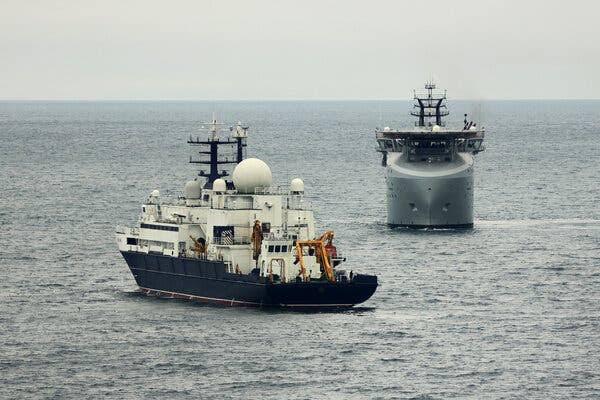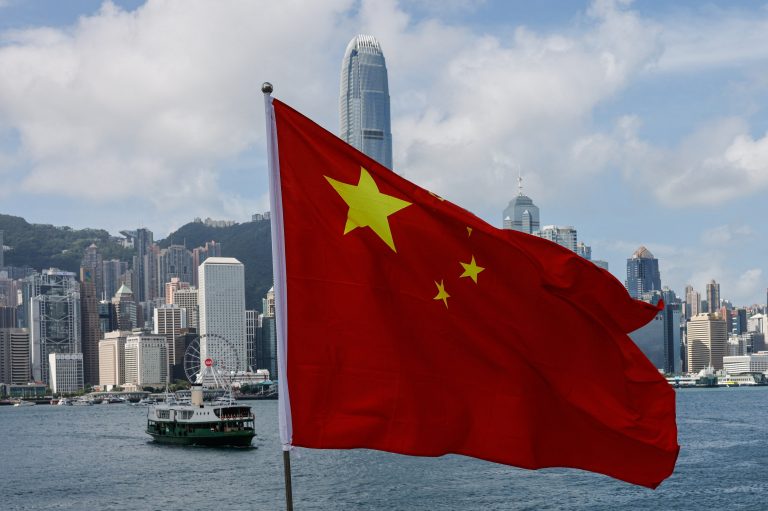
UK Warns Putin After Russian Spy Ship Returns to British Waters
In November 2024, a Russian vessel widely believed to be engaged in clandestine surveillance activities returned to British waters, prompting a rare public admonition from the UK government. The ship, identified as the Russian Navy’s Yantar, was monitored both on the surface and by a covert Royal Navy submarine in an encounter that underscored the growing international concern over undersea infrastructure security. This development, set against the backdrop of heightened tensions since Russia’s full-scale invasion of Ukraine in 2022, has spurred renewed calls for vigilance and stronger measures to safeguard critical undersea cables linking the United Kingdom to its European neighbours and beyond.
The episode has garnered intense scrutiny from multiple media outlets and defence analysts, many referencing Yantar’s capabilities and its history of mapping or potentially tampering with undersea cables. As of 23 January 2025, the UK government’s public warning to President Vladimir Putin signals a more assertive stance.
1. Context: The Importance of Undersea Cables
Undersea cables are integral to modern society’s communication and power needs. According to the International Cable Protection Committee (ICPC), more than 95% of the world’s internet traffic traverses undersea fibre-optic lines. Additionally, many countries rely on submarine power cables to import and export electricity, as well as to connect offshore wind farms to mainland grids. The United Kingdom, given its geographic position, hosts and depends on numerous cables linking it to Ireland, continental Europe, and transatlantic routes.
● Length of Undersea Cables: The ICPC estimates that there are over 1.2 million kilometres of submarine cables globally.
● European Connectivity: Europe is criss-crossed by a dense network of cables, with key links running through the North Sea, English Channel, and Irish Sea.
● Economic Significance: The UK Department for Business and Trade asserts that these cables facilitate trillions of pounds worth of financial transactions daily.
2. The Russian Vessel: Yantar
The Yantar is officially described by Russian authorities as a research vessel specialising in oceanographic studies. However, Western defence experts routinely highlight the ship’s advanced surveillance and submersible capabilities, including the potential to deploy unmanned underwater vehicles that can access cables on the seabed.
Timeline of the Recent Incident
● 10 November 2024: Yantar was sighted off the coast of Cornwall, an area known to host several critical power and communications links.
● 14 November 2024: The vessel was tracked in the Irish Sea, reportedly “hovering” near submarine cables linking the UK and Ireland.
During this period, the Royal Navy monitored Yantar with multiple surface vessels. In a rarely disclosed detail, a British submarine also trailed the Russian ship and, at one point, surfaced to issue a direct verbal warning—a gesture that underscored the seriousness with which the UK viewed the ship’s activities.
UK’s Response and Wider Defence Posture
The Defence Secretary, addressing Parliament, declared that Britain would employ “robust Rules of Engagement” to deter any attempts at compromising critical national infrastructure. In his statement, he emphasised:
“I also want President Putin to hear this message: we see you, we know what you’re doing, and we will not shy away from robust action to protect this country.”
This stance aligns with a broader NATO posture. Reuters reported that several allied nations have increased maritime and aerial patrols in strategic areas, including the North Sea and the Baltic Sea, following incidents of suspected sabotage in 2022 and 2023.
Allegations and Counterclaims
Western intelligence agencies allege that Yantar’s primary mission is to chart and potentially disrupt undersea infrastructure. Russia’s Ministry of Defence, however, dismisses these claims, maintaining the vessel’s operations are strictly scientific. Russia also denies involvement in the damage of European undersea cables or pipelines.
A case in point is the Eagle S oil tanker, impounded by Finnish authorities in December 2024. According to The Guardian, the vessel is accused of dragging its anchor for over 50 miles, damaging cables in the Baltic Sea. While questions remain about intent, the incident has heightened regional anxieties over the vulnerability of critical infrastructure and the possibility of covert sabotage.
Balancing Perspectives and Ensuring Accuracy
● UK Government Position: Britain, supported by NATO allies, views Yantar’s activities as part of a broader pattern of Russian provocation, potentially endangering international infrastructure.
● Russian Defence Ministry View: Official statements emphasise Yantar’s research role, casting Western allegations as “unfounded hysteria” aimed at escalating tensions.
● Independent Experts: Civilian maritime security specialists argue that while Russia’s motivations cannot be conclusively proven in every instance, the recurring nature of Yantar’s appearances near strategic cables is a “significant cause for concern.”
To ensure the facts presented here are accurate, this article references data from the BBC, The Guardian, and Reuters, as well as statements from the UK’s Ministry of Defence and Finnish authorities. All these sources converge on the consensus that there is a heightened risk to vital undersea cables, prompting a coordinated NATO response.
The Path Forward: Security and Cooperation
The UK’s recent warning to President Putin highlights the growing emphasis on maritime security cooperation. Calls for real-time intelligence sharing, joint naval exercises, and improved submarine surveillance technologies have gained momentum within NATO forums. Experts suggest that any comprehensive solution must involve not only military deterrence but also diplomatic channels to reduce misinterpretation and prevent escalation.
Conclusion: A Call for Vigilance and Hope
The strategic chess game around undersea cables continues to evolve. The UK’s decision to confront Yantar signals a more assertive stance—a demonstration that Britain, with NATO backing, is prepared to defend critical infrastructure. Yet, genuine dialogue and transparency remain crucial to de-escalate tensions and avert miscalculation on both sides.
Beyond geopolitical manoeuvring, this is a deeply human story. These hidden cables, lying quietly on the ocean floor, carry the voices of loved ones, the lifeblood of economies, and the aspirations of entire communities. Any threat to that lifeline is a threat to ordinary people’s livelihoods, connections, and futures.
At this moment, we can choose heightened confrontation—or we can harness international cooperation for greater understanding. The warning to President Putin is ultimately a warning to all of us: safeguard what unites us, strengthen what sustains us, and strive for a world where communication flows freely and safely beneath our shared seas. By standing firm yet seeking dialogue, leaders can protect these vital connectors—lights in the ocean’s depths that keep us all connected.
Aric Jabari is the Editorial Director of the Sixteenth Council.



